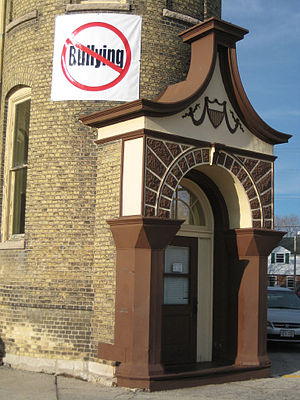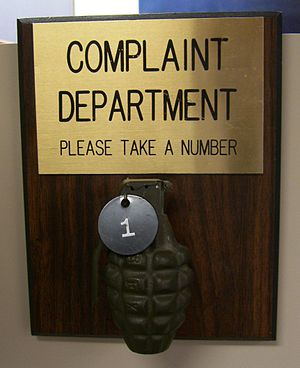 |
| Evolução do preço do petróleo cru (Photo credit: Wikipedia) |
One important requirement that the federal government takes very seriously in the realm of special education is data. Gotta have lotsa data. For those of us who are arithmetically challenged, these are also know as numbers or figures. Lest I get too folksy, ...
One of the many excellent services that the great people at CADRE offer is to make sense of the dispute resolution data. If you are interested in special education, you should be aware of these data compilations.
The new information was posted on the CADRE website recently. You can find the CADRE website here.
If you are interested in how your state compares with others over the last five school years in terms of numbers of mediations, due process hearings and state complaints, you should check out the tables. Particularly useful are the tables showing numbers of dispute resolution events by 10,000 special education students. These charts allow comparisons not altered by differences in population or number of students served.
Here are a few quotes from the introduction to the data analysis by Dr. Dick Zeller of CADRE:
"Nationally, the filing of written state complaints peaked in 2004-05 (6,201) and has declined by more than 20% since then (see Table 1). Complaint reports issued and complaint reports with findings have decreased even more over the same period (30.3% and 28.9%, respectively)...
The number of mediations reported (see Table 2) peaked in 2004-05 (7,121), then declined sharply in 2005-06 and 2006-07 as the resolution process was implemented. Most of that decrease in mediation activity was in mediations related to due process; it appears that the resolution process was not only an additional dispute resolution option, but also initially replaced what would have been mediations held related to due process complaints. For three years, the number of mediations held then increased again to 6,054 mediations in 2008-09, with 4,246 agreements reached, followed by a decline in mediation activity for 2009-10. . From 2004-05 to 2005-06 due process related mediation as a percentage of all mediation activity dropped for both mediations held (from 60% to 50%) and for mediation agreements (from 58% to 44%), then has varied in the past four years. A shift away from due process related mediation may reflect an increased interest in using third party neutrals to assist parents and schools to resolve due process complaints in the resolution process, particularly where strained relationships may benefit from external support...
Due process (DP) complaint filings peaked in 2004-05, rising to over 21,000 filings (see Table 3). Since then, due process filings have declined by just over 18% to just 17,228 in 2009-10. The reported number of fully adjudicated due process hearings also peaked in 2004-05 and has declined sharply (by >68%) over the past years. The percentage of DP complaints that result in a hearing has declined substantially over these six years (from 35% to 14%, although about 75% of this reduction is due to one entity’s reduction in activity). The percentage of pending DP complaints has increased over the same period from 11% of requests to 145 to 16% of requests (the peak in pending hearings in 2007-08 nationally can be attributed largely to two states). The increase in pending complaints is likely due, at least in part, to the effective increase in the timeline when the resolution process runs its full 30 days...
The percentage of due process complaints resolved without a hearing has grown with the implementation of the resolution process (from 54% of filings in 2004-05 to 70% in 2009-10). The proportion of these resolutions that are the result of a Written Settlement Agreement increased to about 25% in 2009-10. If this trend continues, it suggests that the resolution agreement process is indeed having a positive impact on the resolution of due process complaints without resorting to a hearing. A few states have included summaries in their APRs that breakdown of “resolved without a hearing” into subcategories (e.g., by written settlement agreement, by other settlement after the resolution period, by DP related mediation agreement, by DP complaint withdrawal, by Hearing Officer insufficiency determination), but comparable national data of this sort does not exist across states..."
CADRE and Dr. Zeller welcome questions from the field about the data.
Here are a few quotes from the introduction to the data analysis by Dr. Dick Zeller of CADRE:
"Nationally, the filing of written state complaints peaked in 2004-05 (6,201) and has declined by more than 20% since then (see Table 1). Complaint reports issued and complaint reports with findings have decreased even more over the same period (30.3% and 28.9%, respectively)...
The number of mediations reported (see Table 2) peaked in 2004-05 (7,121), then declined sharply in 2005-06 and 2006-07 as the resolution process was implemented. Most of that decrease in mediation activity was in mediations related to due process; it appears that the resolution process was not only an additional dispute resolution option, but also initially replaced what would have been mediations held related to due process complaints. For three years, the number of mediations held then increased again to 6,054 mediations in 2008-09, with 4,246 agreements reached, followed by a decline in mediation activity for 2009-10. . From 2004-05 to 2005-06 due process related mediation as a percentage of all mediation activity dropped for both mediations held (from 60% to 50%) and for mediation agreements (from 58% to 44%), then has varied in the past four years. A shift away from due process related mediation may reflect an increased interest in using third party neutrals to assist parents and schools to resolve due process complaints in the resolution process, particularly where strained relationships may benefit from external support...
Due process (DP) complaint filings peaked in 2004-05, rising to over 21,000 filings (see Table 3). Since then, due process filings have declined by just over 18% to just 17,228 in 2009-10. The reported number of fully adjudicated due process hearings also peaked in 2004-05 and has declined sharply (by >68%) over the past years. The percentage of DP complaints that result in a hearing has declined substantially over these six years (from 35% to 14%, although about 75% of this reduction is due to one entity’s reduction in activity). The percentage of pending DP complaints has increased over the same period from 11% of requests to 145 to 16% of requests (the peak in pending hearings in 2007-08 nationally can be attributed largely to two states). The increase in pending complaints is likely due, at least in part, to the effective increase in the timeline when the resolution process runs its full 30 days...
The percentage of due process complaints resolved without a hearing has grown with the implementation of the resolution process (from 54% of filings in 2004-05 to 70% in 2009-10). The proportion of these resolutions that are the result of a Written Settlement Agreement increased to about 25% in 2009-10. If this trend continues, it suggests that the resolution agreement process is indeed having a positive impact on the resolution of due process complaints without resorting to a hearing. A few states have included summaries in their APRs that breakdown of “resolved without a hearing” into subcategories (e.g., by written settlement agreement, by other settlement after the resolution period, by DP related mediation agreement, by DP complaint withdrawal, by Hearing Officer insufficiency determination), but comparable national data of this sort does not exist across states..."
CADRE and Dr. Zeller welcome questions from the field about the data.
Here are a few other gems that I have unearthed to whet your appetite. In school year 2009-2010 the number of mediations per 10,000 special ed kids in the following states was: Massachusetts 57.3; California 39.4; Connecticut 39.3; Louisiana 0.8; South Carolina 0.5; Georgia 0.0.
Also for school year 2009-2010: the number of due process hearings held per 10,000 special ed kids were: District of Columbia 248; Hawaii 21; New York 9.2; New Jersey 2.4; Pennsylvania 2.2; Michigan 0.2; Minnesota 0.2; Kentucky 0.1. I'm not sayin'...I'm just sayin' ...
You can review the charts and the data plus the CADRE analysis of the data here. Let me know what you find.













































